Options
Heel Knots
The heel knot is usually some variation of a Turks Head knot. The exact knot is dependent on the size of the knot foundation which can be varied a bit depending on the user's hand size. The profile can be adjusted as well, some people prefer a squared profile, others prefer a rounded profile. The end of the heel knot can be finished with conchos, paracord braids or spirals, the JRC Handcrafted vanity stamp, or simply covered with the knot. Conchos are the only heel knot option that may incur cost extra depending on the concho itself.
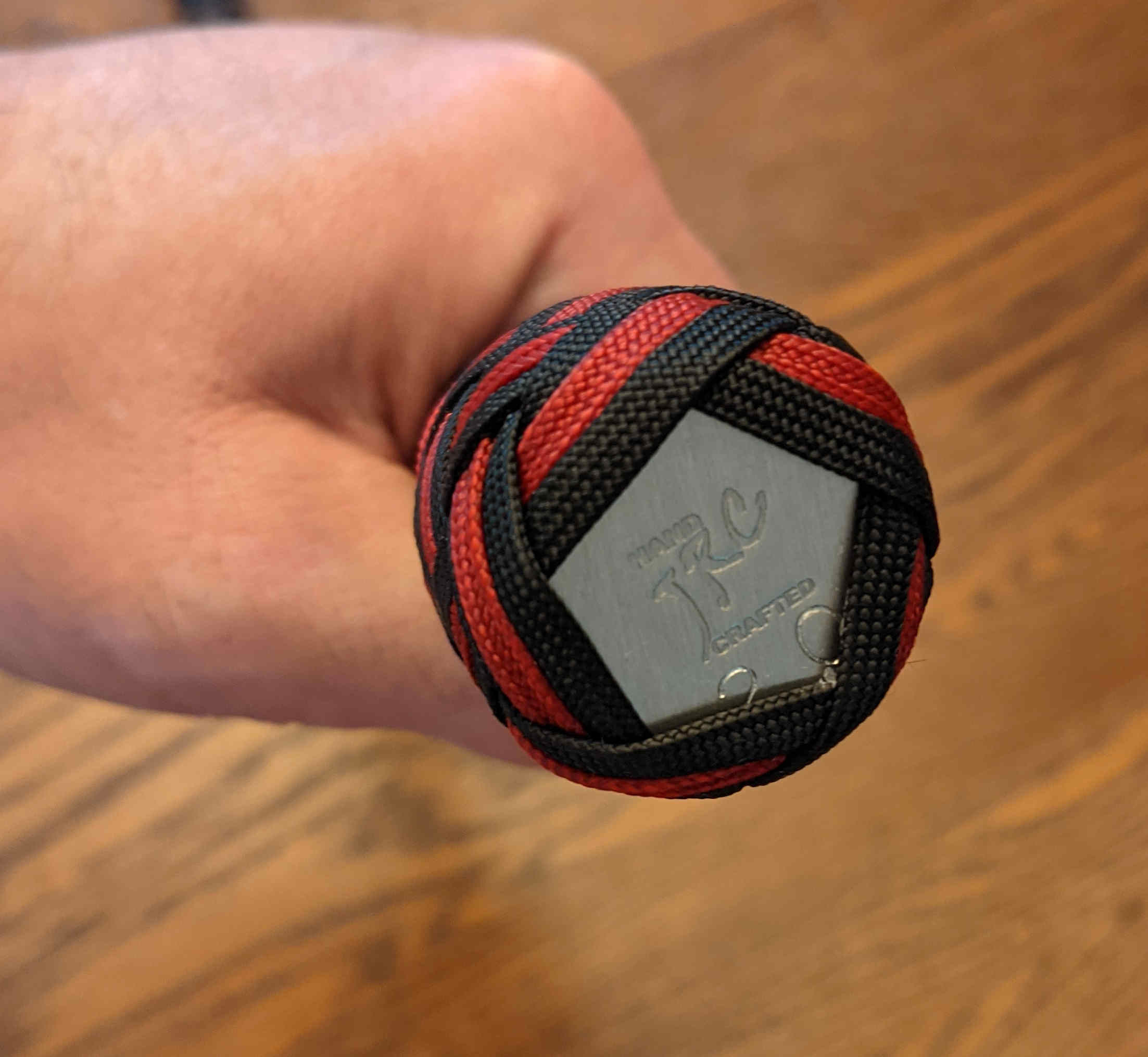
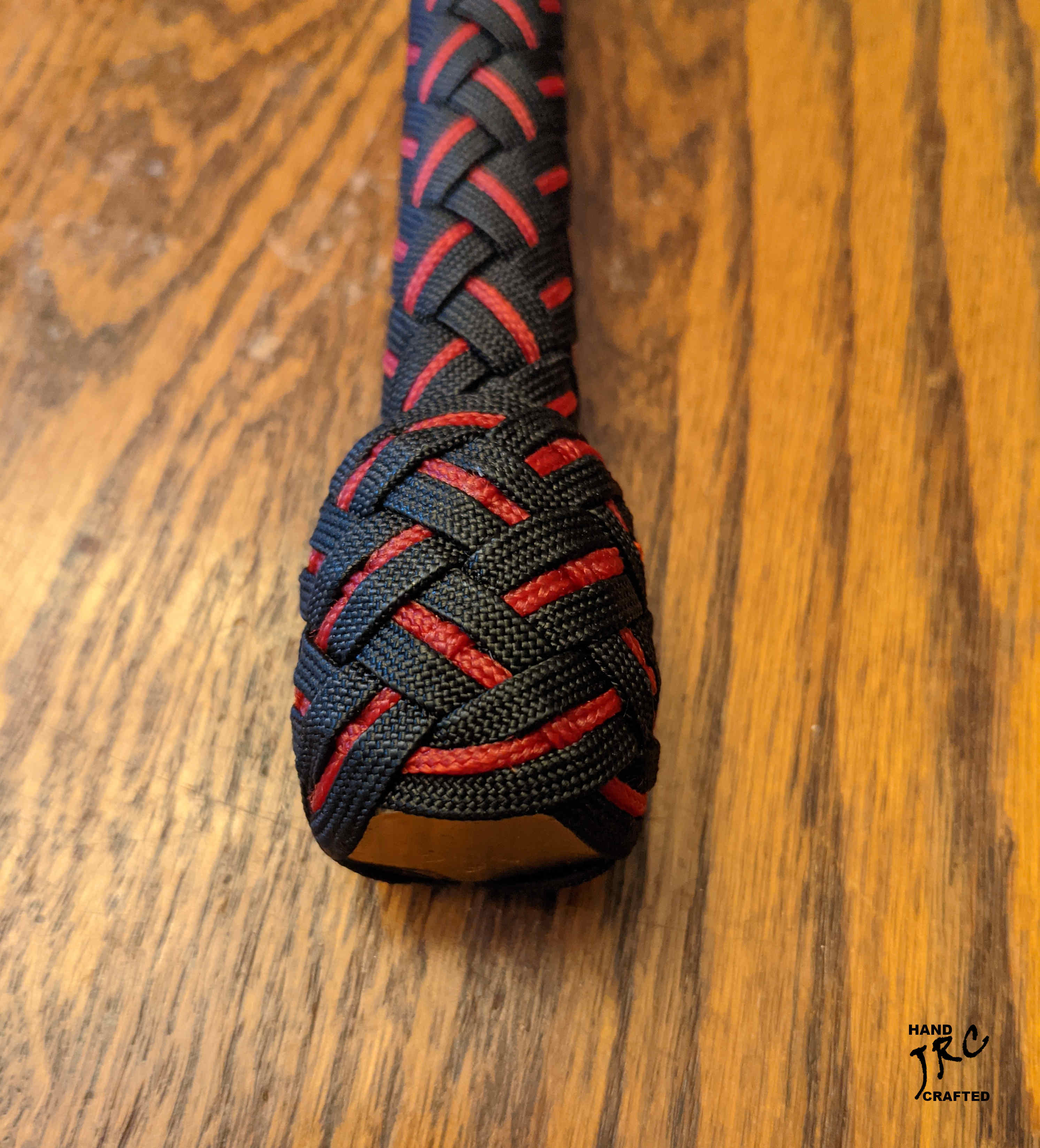
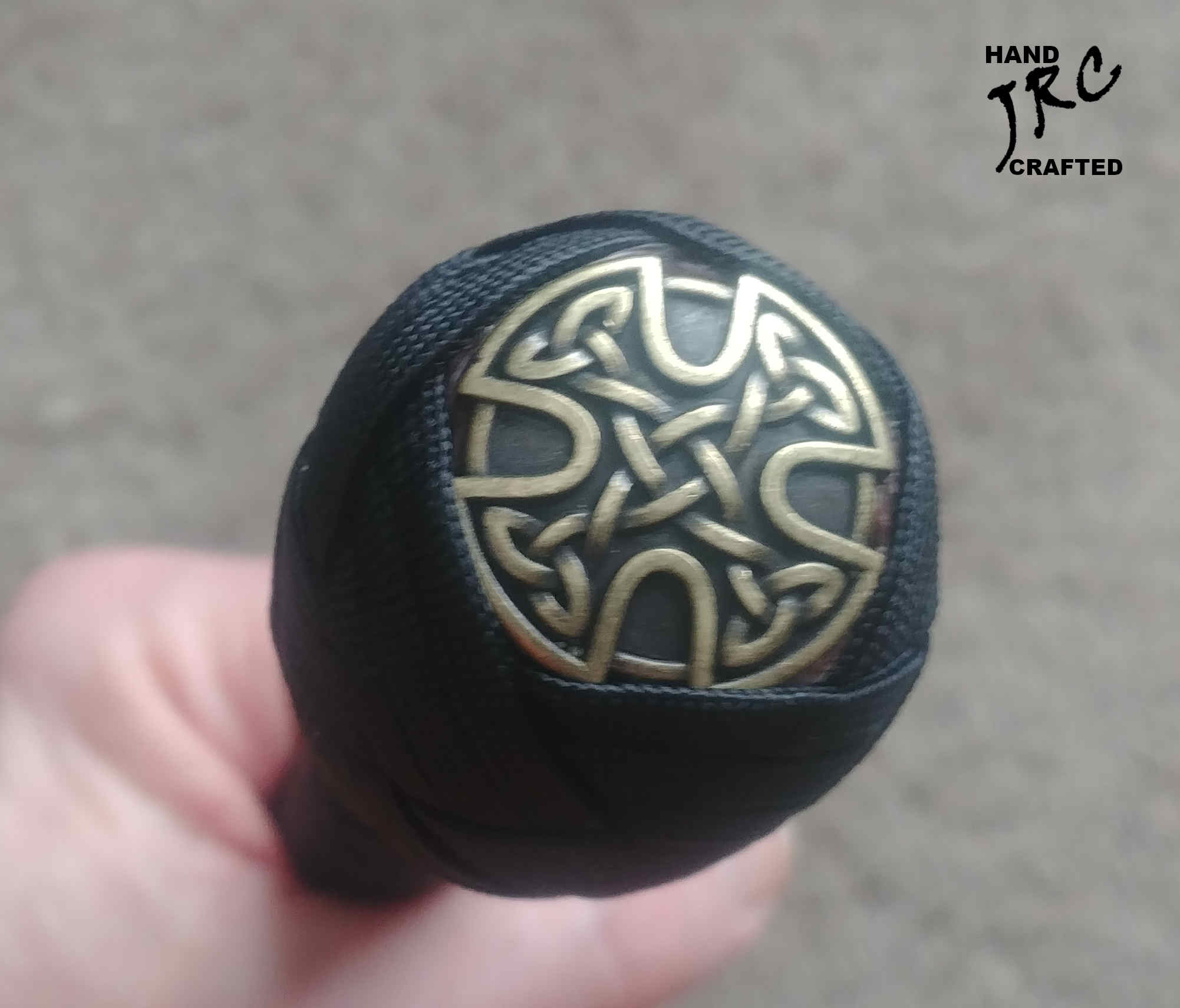
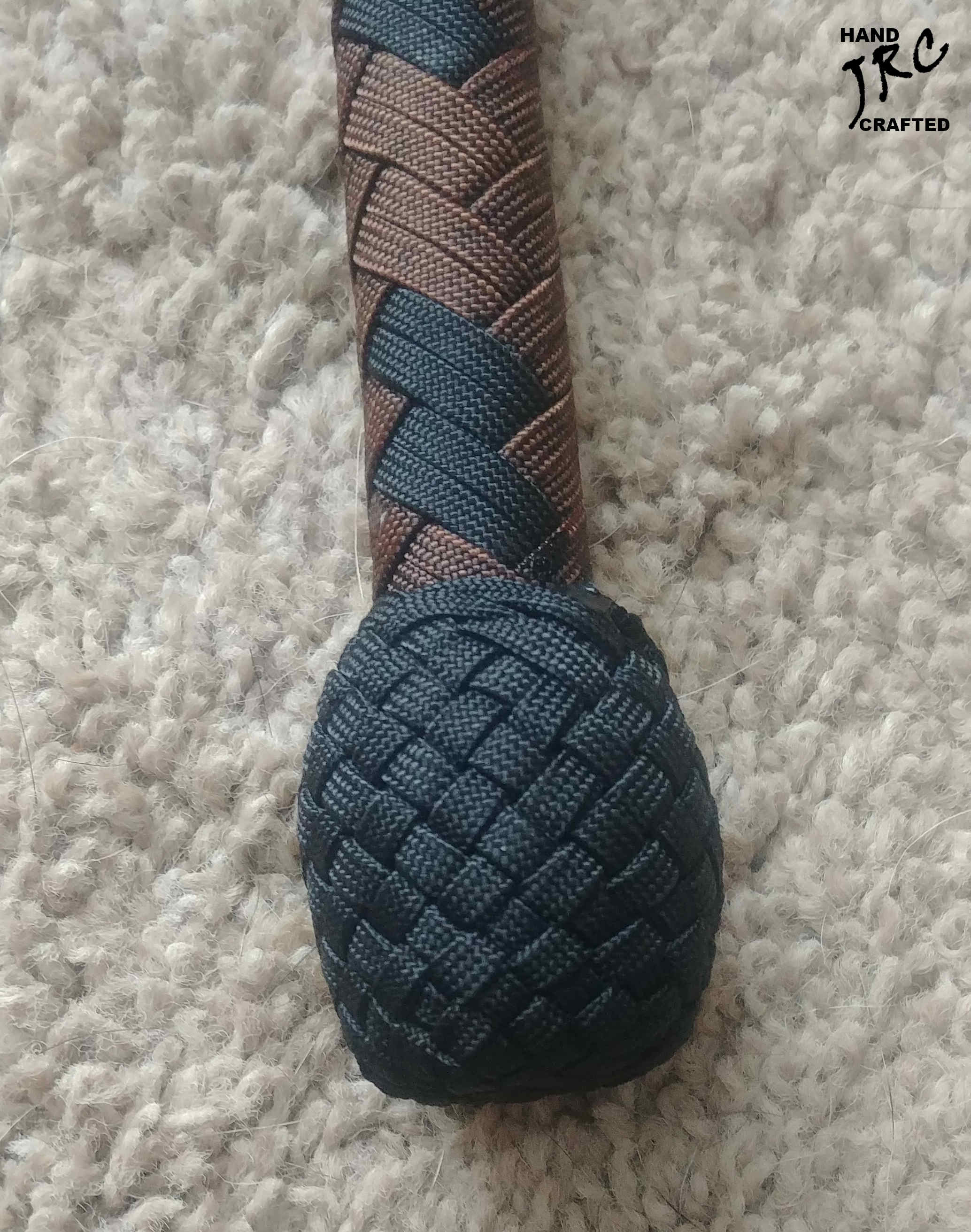
Transition Knots
Transition knots are strictly cosmetic and are used to hide the transition between the braiding of the handle and the braiding of the thong. Two pass Turks Head knots and Spanish Ring knots are common for transition knots.Transition knots can be added to any whip for $10.
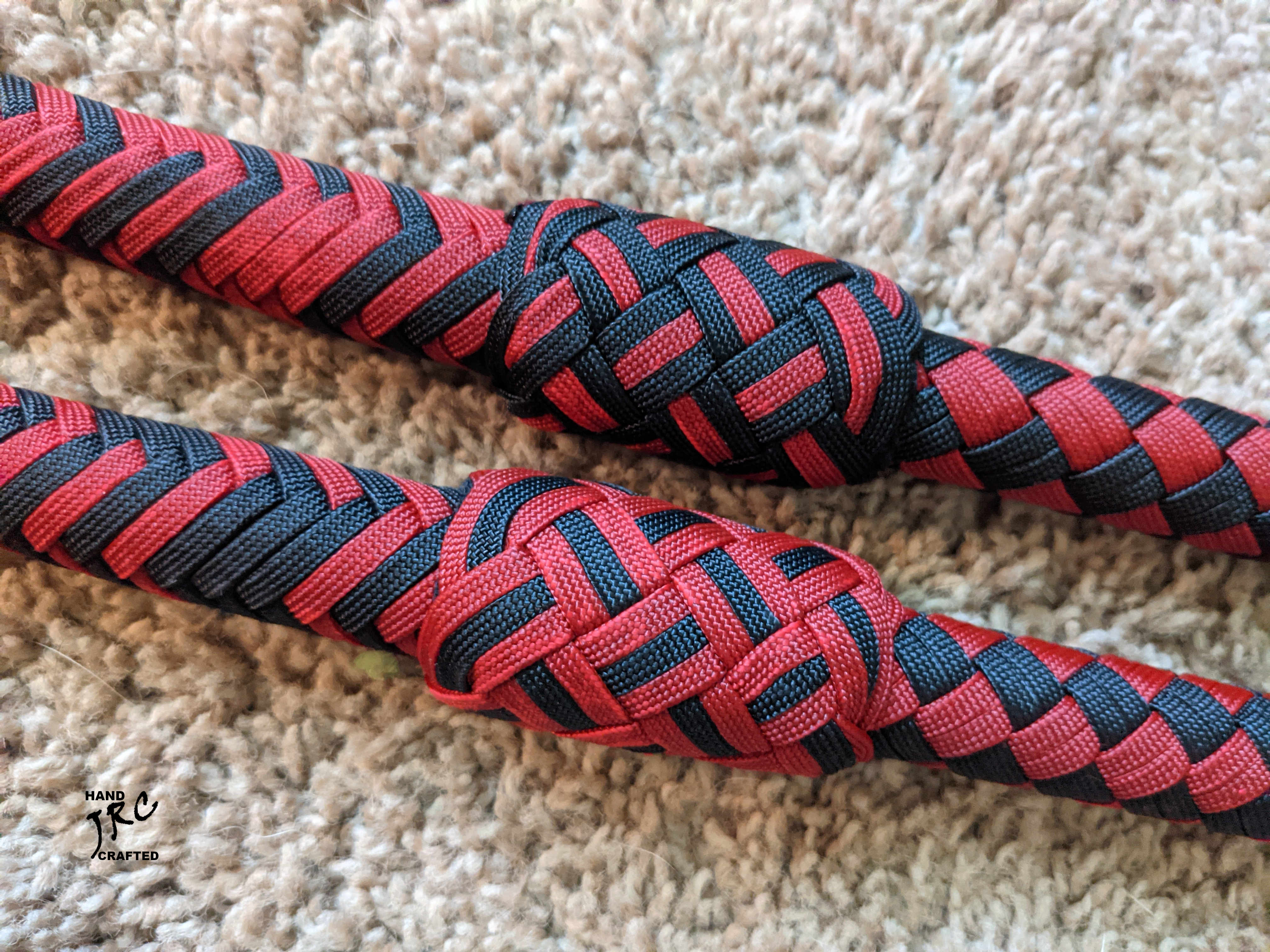
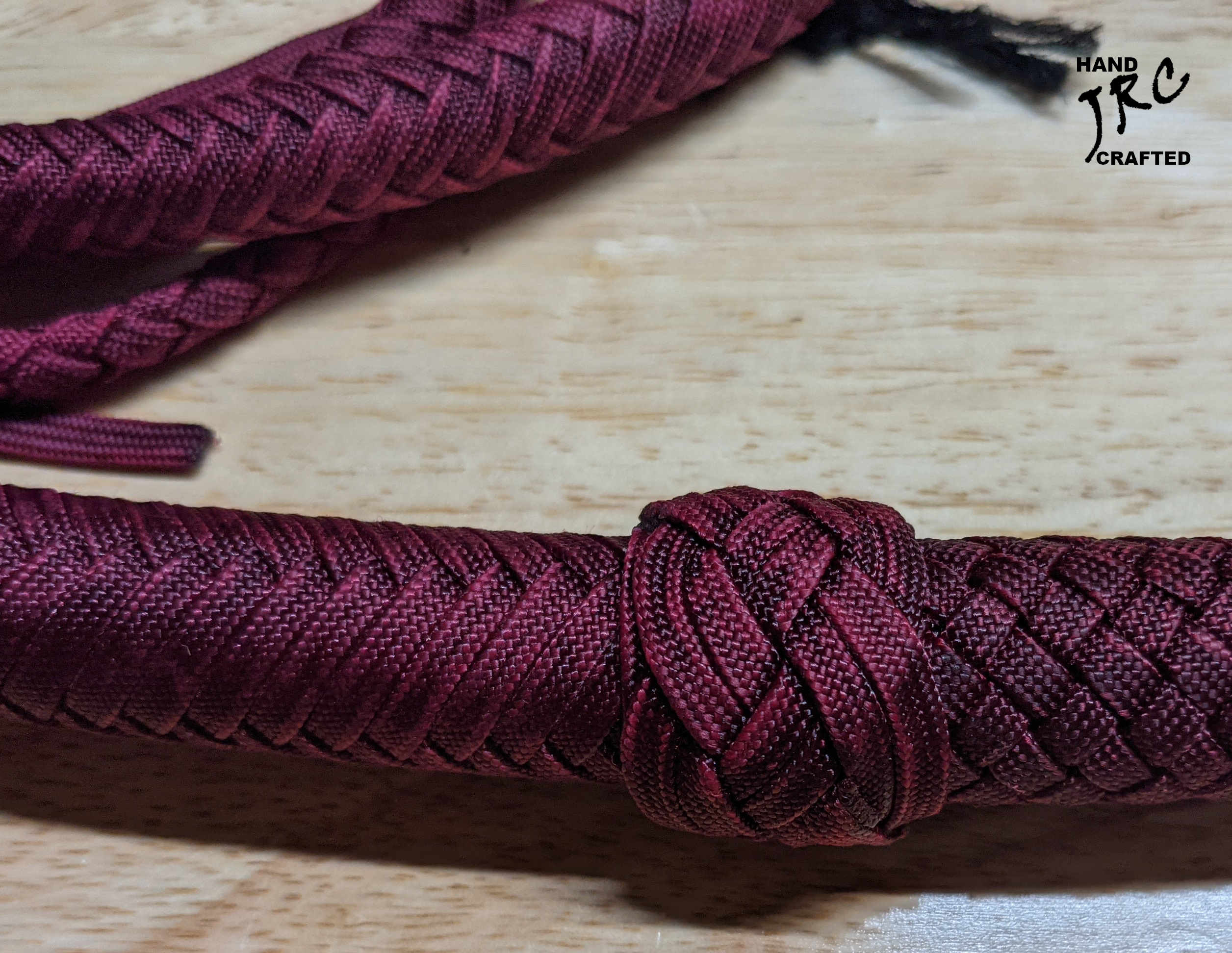
Wrist Thongs
For many bullwhip owners, the wrist straps main purpose is simply to make a whip look Indiana Jones-ish. In reality, wrist straps were mostly non-existent in the old west, as a whip trailing on the ground and attached to the wrist was dangerous. If the trailing end of the whip got caught on something or stepped on by a horse, it would easily rip the rider from their mount.Wrist thongs can be added to any whip for $25.

Fancy Plaiting
Whip handles can include fancy plaiting. Geometric patterns, basic shapes, and even words can be plaited into handles. This requires quite a bit of extra setup and planning before plaiting even begins. Contact me to talk through designing what you want. Additional fees may apply depending on the complexity of the design.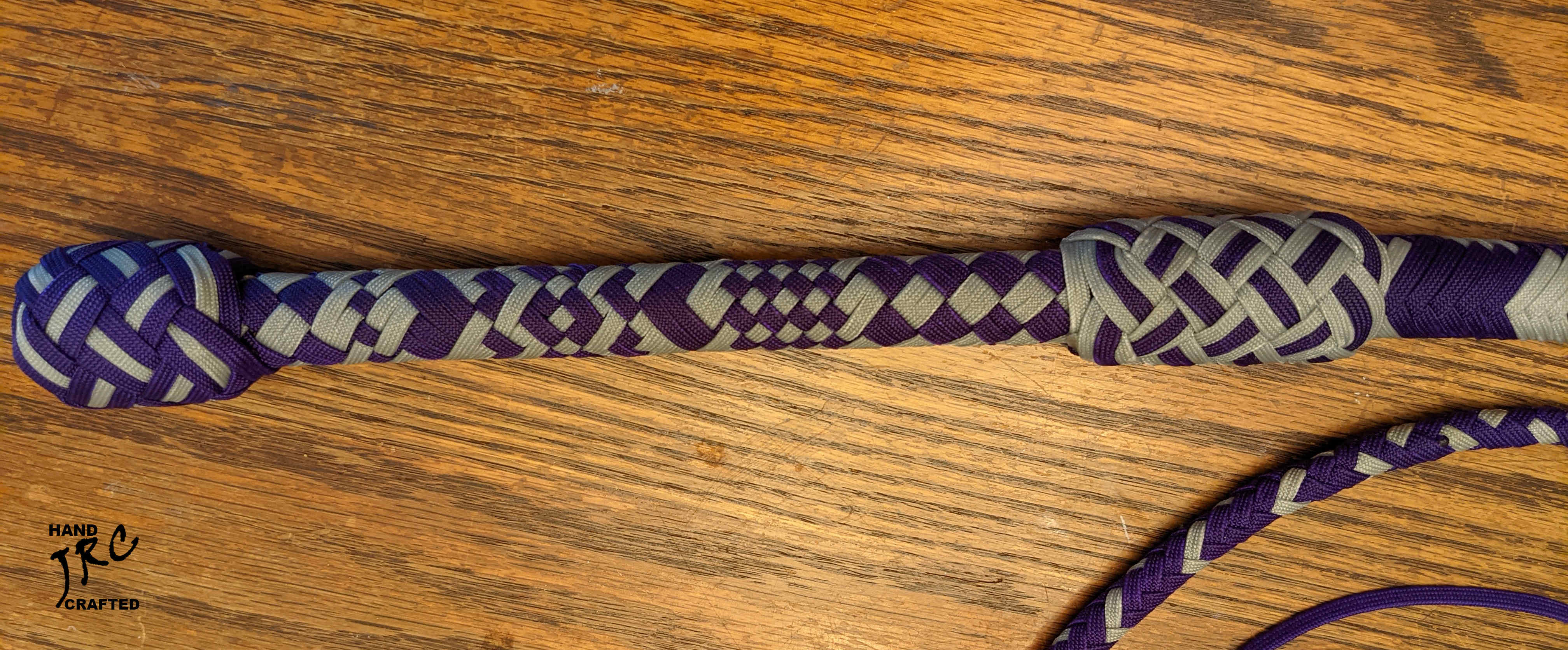
Waxing
Most of my whips are waxed. The process is simply submerging the whip in a paraffin bath for a few minutes and allowing the material to absorb the wax. This process adds weight, tightens the plaiting a bit, and helps protect the whip from wear and tear. One of the side affects of this process is that darkens the cord giving it a wet look and making it look almost leather like. It will also add a "distressed" look to the whip, making it look broken in. This is most noticeable with lighter colored whips.Although in most cases it's desirable to wax nylon whips, there are valid reasons not to wax them as well, for example, a "working" whip that will be exposed to hot sun all day may bleed wax into whatever it is resting upon.
If for some reason you don't want your whip waxed, be sure to let me know.
